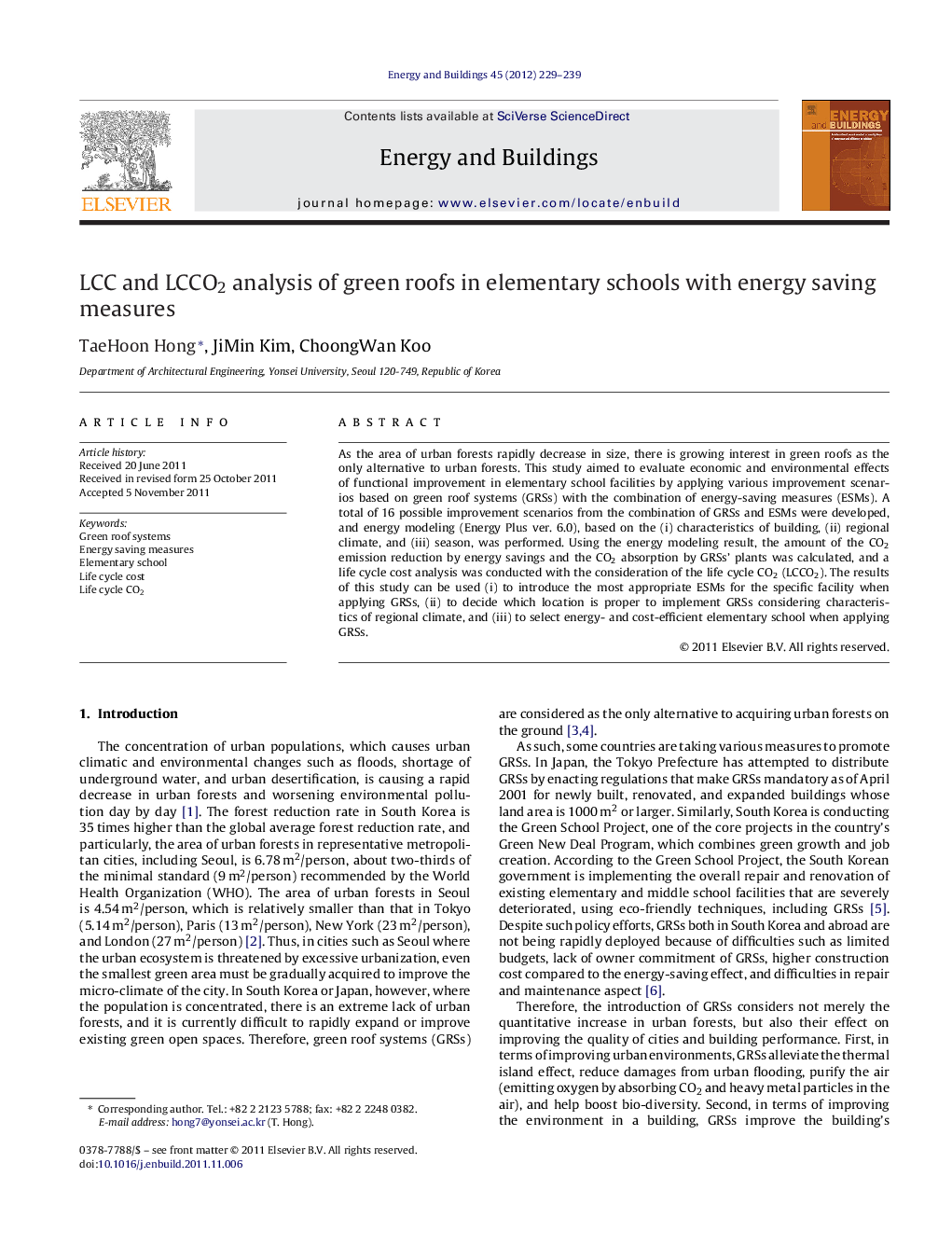| Article ID | Journal | Published Year | Pages | File Type |
|---|---|---|---|---|
| 264004 | Energy and Buildings | 2012 | 11 Pages |
As the area of urban forests rapidly decrease in size, there is growing interest in green roofs as the only alternative to urban forests. This study aimed to evaluate economic and environmental effects of functional improvement in elementary school facilities by applying various improvement scenarios based on green roof systems (GRSs) with the combination of energy-saving measures (ESMs). A total of 16 possible improvement scenarios from the combination of GRSs and ESMs were developed, and energy modeling (Energy Plus ver. 6.0), based on the (i) characteristics of building, (ii) regional climate, and (iii) season, was performed. Using the energy modeling result, the amount of the CO2 emission reduction by energy savings and the CO2 absorption by GRSs’ plants was calculated, and a life cycle cost analysis was conducted with the consideration of the life cycle CO2 (LCCO2). The results of this study can be used (i) to introduce the most appropriate ESMs for the specific facility when applying GRSs, (ii) to decide which location is proper to implement GRSs considering characteristics of regional climate, and (iii) to select energy- and cost-efficient elementary school when applying GRSs.
► We evaluate LCC including LCCO2 through 16 scenarios of green roof systems (GRSs). ► To improve energy saving effect with GRSs, followings should be considered. ► In cold region, insulation performance should be improved through external surface. ► In hot region, internal heating should be reduced and solar radiation, blocked. ► Scenario 14 can reduce annual energy consumptions by 29.6%, BEP within 26 years.
